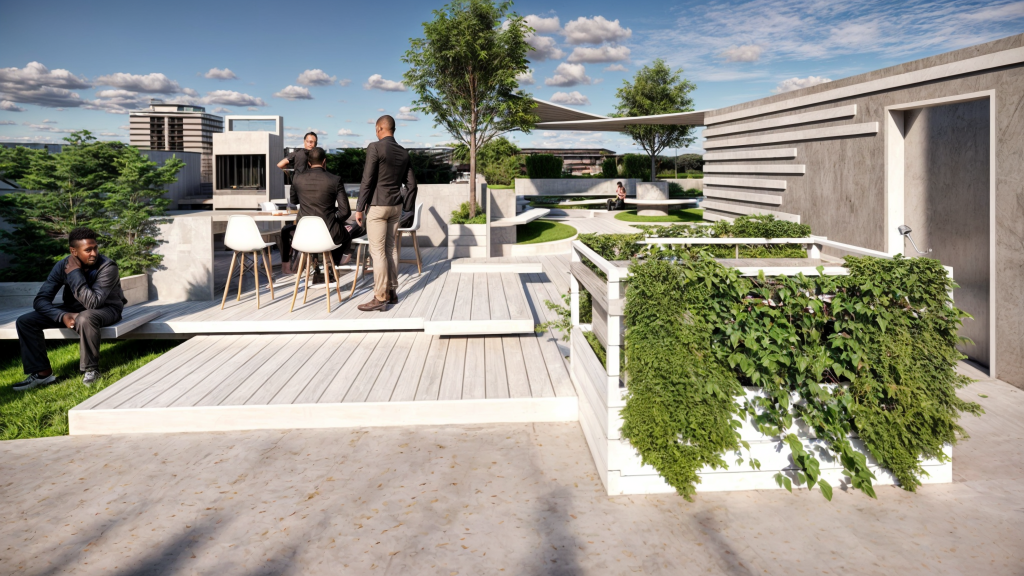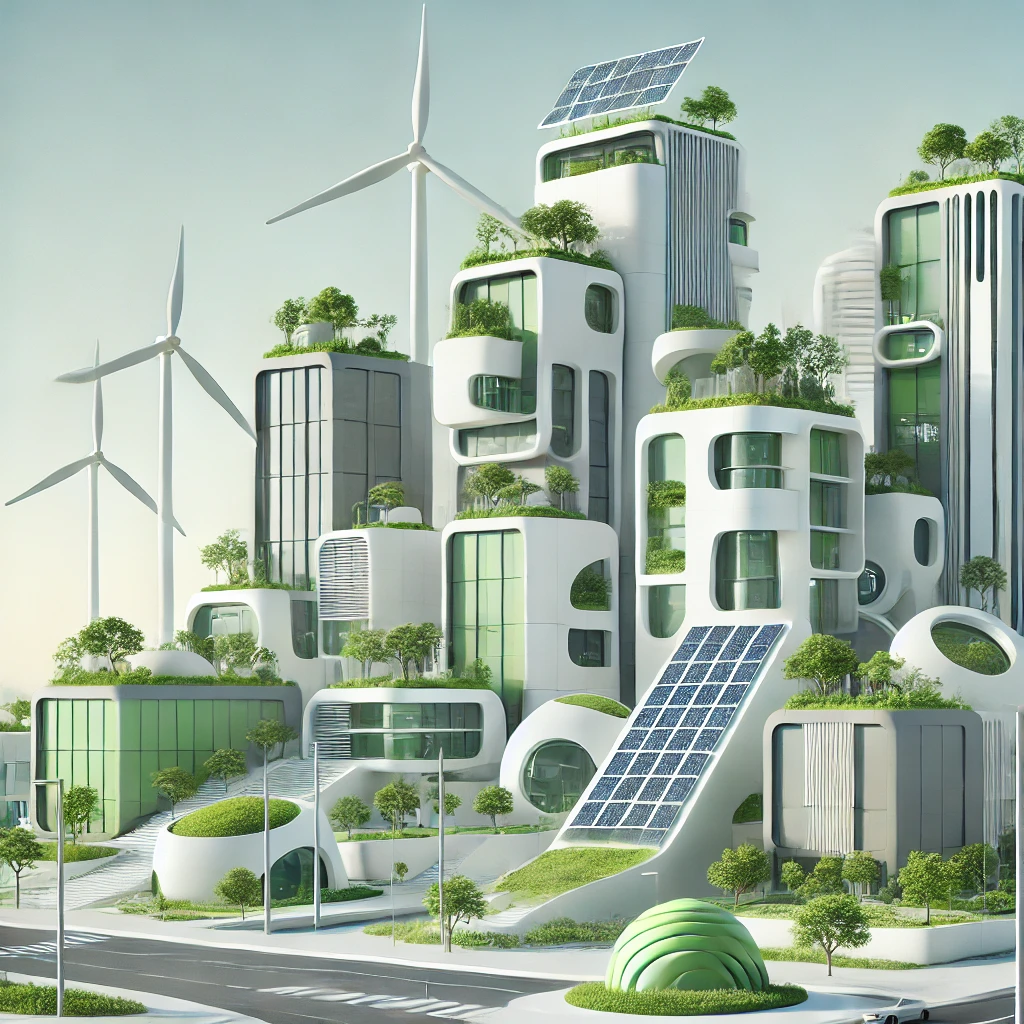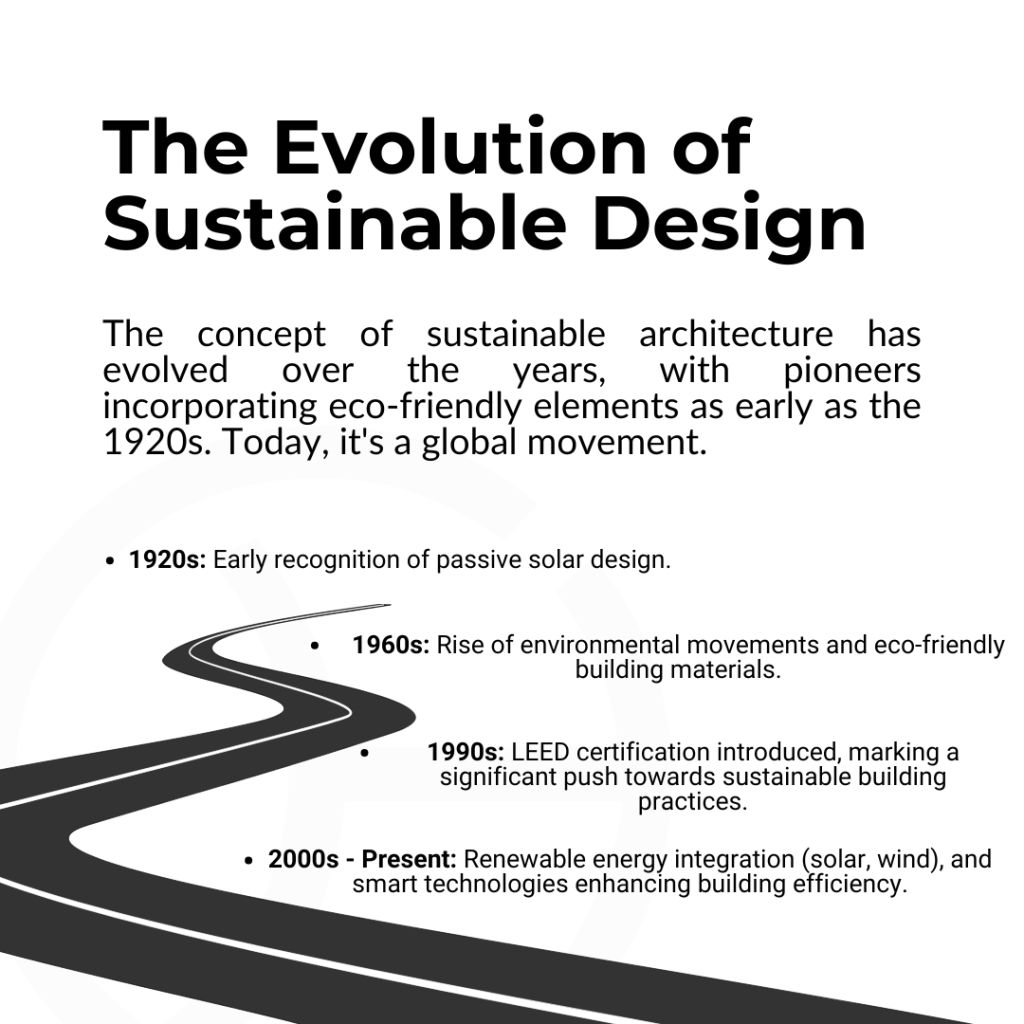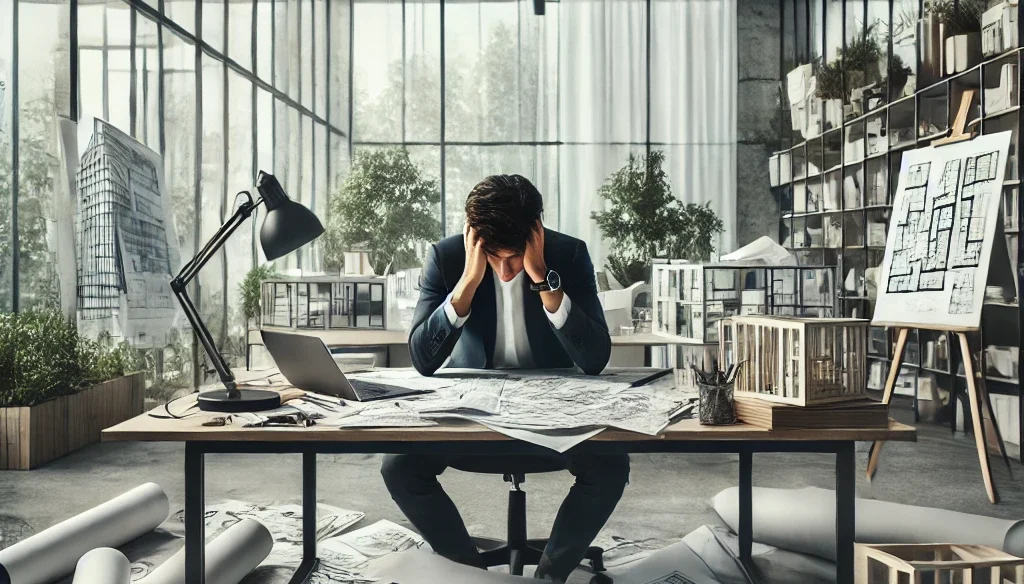In today’s world, where environmental concerns are increasingly critical, sustainable architecture has become a vital approach in the design and construction industry. It’s about more than just “green buildings”; it’s about creating structures that harmoniously balance human needs with ecological preservation. As challenges like climate change and resource depletion intensify, the need for environmentally responsible design has never been more urgent. This blog explores the key elements, benefits, and the future of sustainable architecture and interior design, highlighting how they pave the way for a greener tomorrow.
1. What Is Sustainable Architecture?
Sustainable architecture aims to minimize the negative environmental impact of buildings by enhancing efficiency and moderation in the use of materials, energy, and development space. It involves creating structures that are in harmony with their environment and use resources efficiently.
Key Principles:
- Maximizing Natural Light and Ventilation: Designing buildings to take full advantage of natural resources reduces reliance on artificial lighting and climate control.
- Use of Renewable Resources: Incorporating materials like bamboo, reclaimed wood, and recycled metals reduces environmental impact.
- Reducing Waste and Energy Consumption: Implementing systems and practices that lower the carbon footprint during and after construction.
- Enhancing Well-being and Resilience: Creating spaces that promote health, comfort, and adaptability to changing environmental conditions.
Sustainable architecture considers the entire lifecycle of a building, from design and construction to operation and eventual decommissioning.
2. Key Elements of Sustainable Architecture and Interior Design
Sustainable architecture and interior design integrate various elements that collectively contribute to environmental responsibility and energy efficiency.
Green Roofs
Green roofs are covered with vegetation, providing insulation, reducing the urban heat island effect, and improving air quality. At Chi’Livin, we specialize in integrating green roofs into our designs to enhance sustainability.

Renewable Energy Sources

- Solar Panels: Harvesting solar energy to power buildings.
- Wind Turbines: Utilizing wind energy, especially in high-rise structures.
These technologies reduce reliance on fossil fuels and lower greenhouse gas emissions. Learn more about our approach to renewable energy on our Sustainable project.
Recycled Building Materials
Using recycled or upcycled materials reduces waste and the demand for new resources. Examples include recycled steel, reclaimed wood, and recycled plastic composites.
Optimizing Natural Light and Ventilation
Designing layouts that allow for maximum daylight reduces the need for artificial lighting. Natural ventilation systems decrease reliance on HVAC systems, improving air quality and comfort. Read about our strategies on our Design Philosophy page.
Smart Technologies for Energy Efficiency
Implementing smart building systems that monitor and adjust energy use enhances efficiency. This includes automated lighting, climate control systems, and energy management software.
3. Benefits of Sustainable Architecture and Interior Design
Sustainable architecture and interior design offer numerous advantages that extend beyond environmental conservation.
Promotes Well-being and Healthier Living Spaces
- Improved Air Quality: Use of non-toxic materials and better ventilation leads to healthier indoor environments.
- Enhanced Comfort: Natural lighting and temperature regulation improve occupant comfort and productivity.
Reduces Long-term Energy Costs
Energy-efficient designs and renewable energy integration result in significant cost savings over a building’s lifespan.
Builds Resilient and Self-sustaining Communities
By reducing resource dependency and environmental impact, sustainable buildings support the development of communities that are resilient to environmental and economic challenges.
4. The Evolution of Sustainable Architecture
Sustainable architecture has evolved significantly over the past century, influenced by technological advancements and growing environmental awareness.

5. The Future of Sustainable Architecture and Interior Design
Looking ahead, sustainable architecture and interior design are poised to become the standard rather than the exception, with innovations driving the industry forward.
Energy-generating Materials
Development of materials that generate energy, such as photovoltaic glass, will turn entire building surfaces into energy producers.
Zero-waste Construction Techniques
Emphasis on prefabrication, modular construction, and 3D printing reduces waste and allows for more precise use of materials.
Greater Harmony Between Architecture and Nature
Designs will increasingly blur the lines between indoor and outdoor spaces, incorporating natural elements and biomimicry to create buildings that coexist with their environments.
6. Sustainability at the Core of Chi’Livin
At Chi’Livin, sustainability isn’t an afterthought—it’s at the heart of everything we do.
Eco-friendly Materials and Energy-efficient Systems
We prioritize the use of sustainable materials and incorporate energy-efficient technologies into our designs to minimize environmental impact.
Designing Spaces that Nurture the Environment and People
Our approach balances ecological responsibility with human comfort, creating spaces that enhance well-being while respecting the planet.
Commitment to Lowering the Carbon Footprint
We are dedicated to reducing our carbon footprint through innovative design solutions, contributing to a greener future for generations to come.
Conclusion
Sustainable architecture and interior design are more than trends; they’re necessary evolutions in how we build and inhabit our spaces. By embracing environmentally responsible design, we protect our planet and enhance the quality of life for individuals and communities.
At Chi’Livin, we are committed to leading the way in sustainable architecture and interior design, continually pushing the boundaries of what’s possible to build a greener tomorrow.
Ready to embark on a journey towards sustainable living? Explore our sustainable projects and discover how we can help you create a space that’s both beautiful and environmentally responsible.




